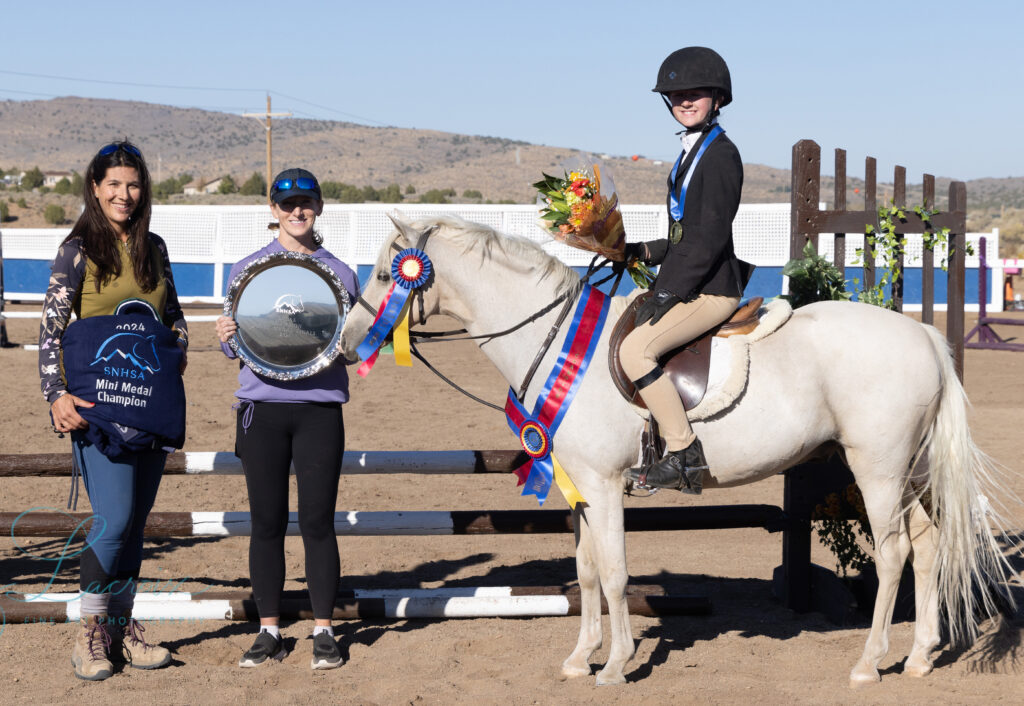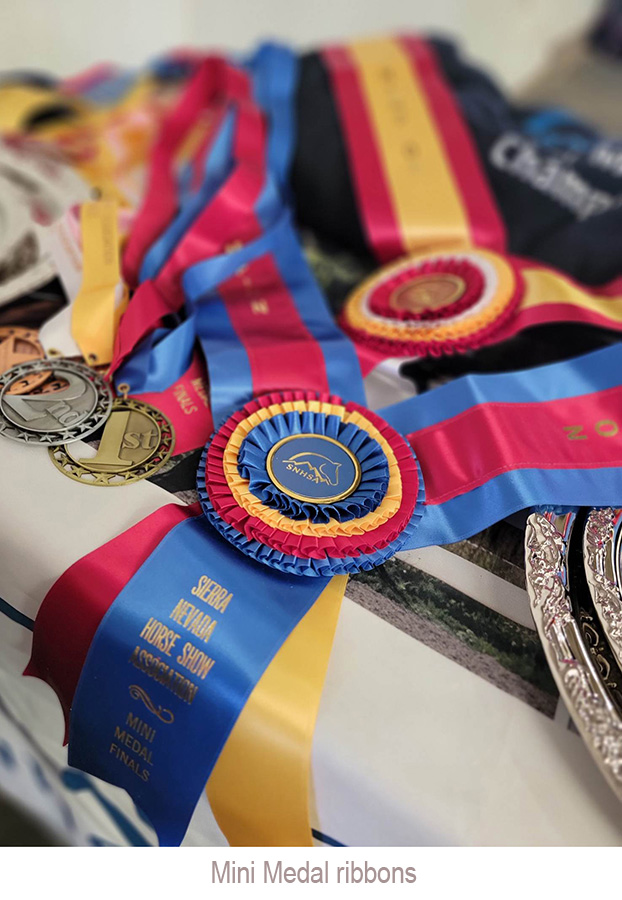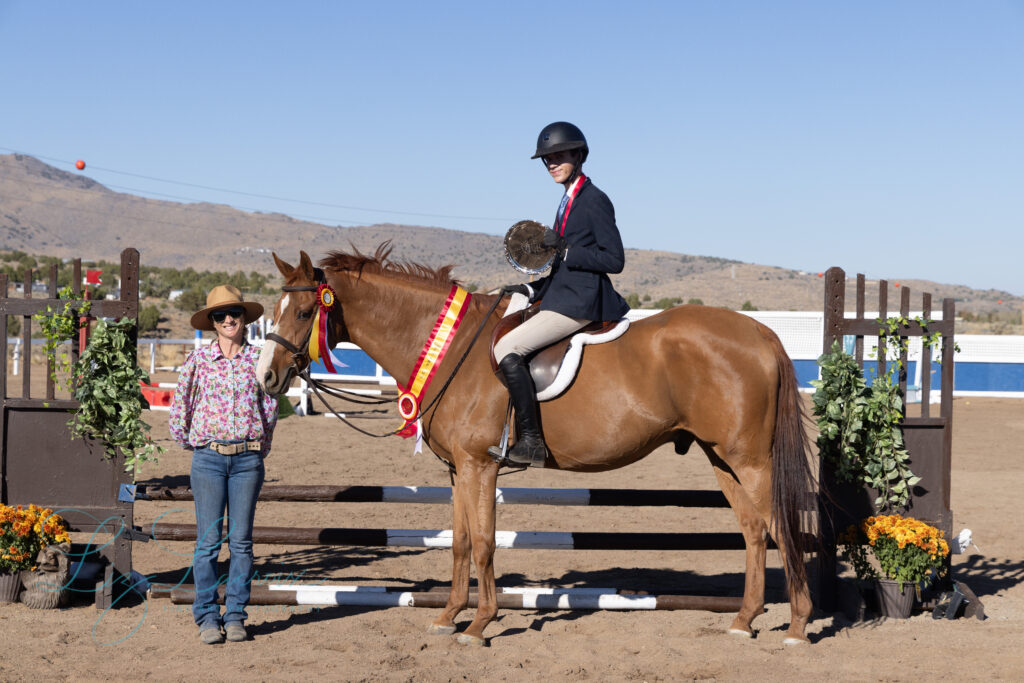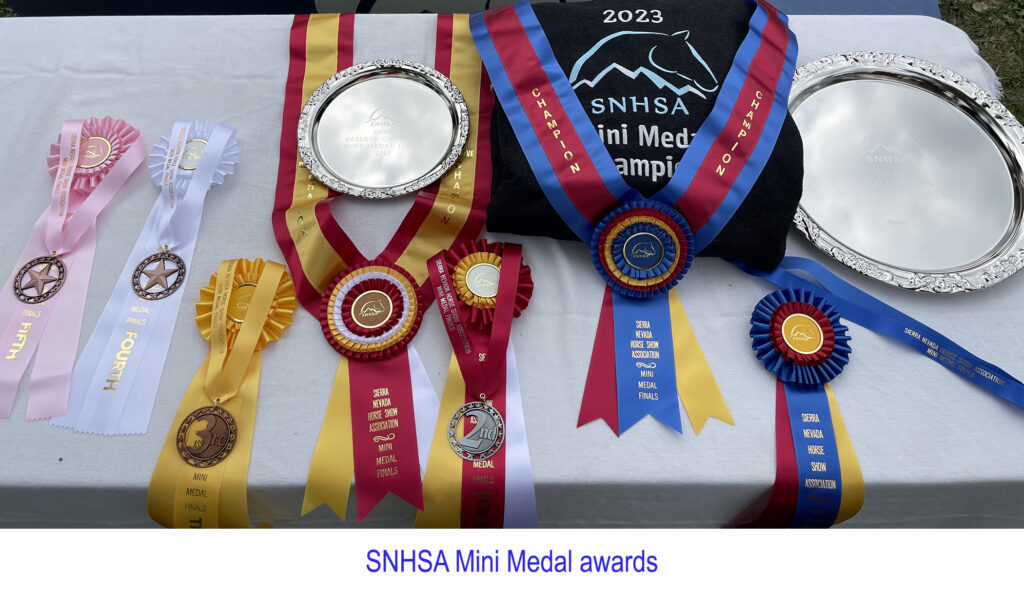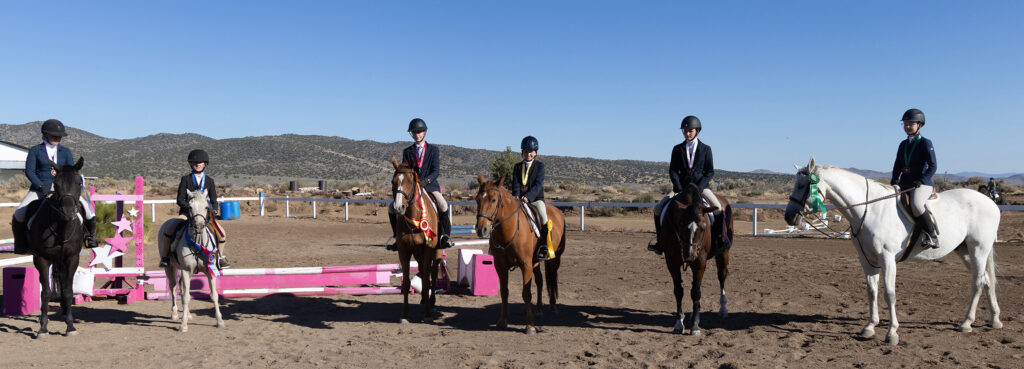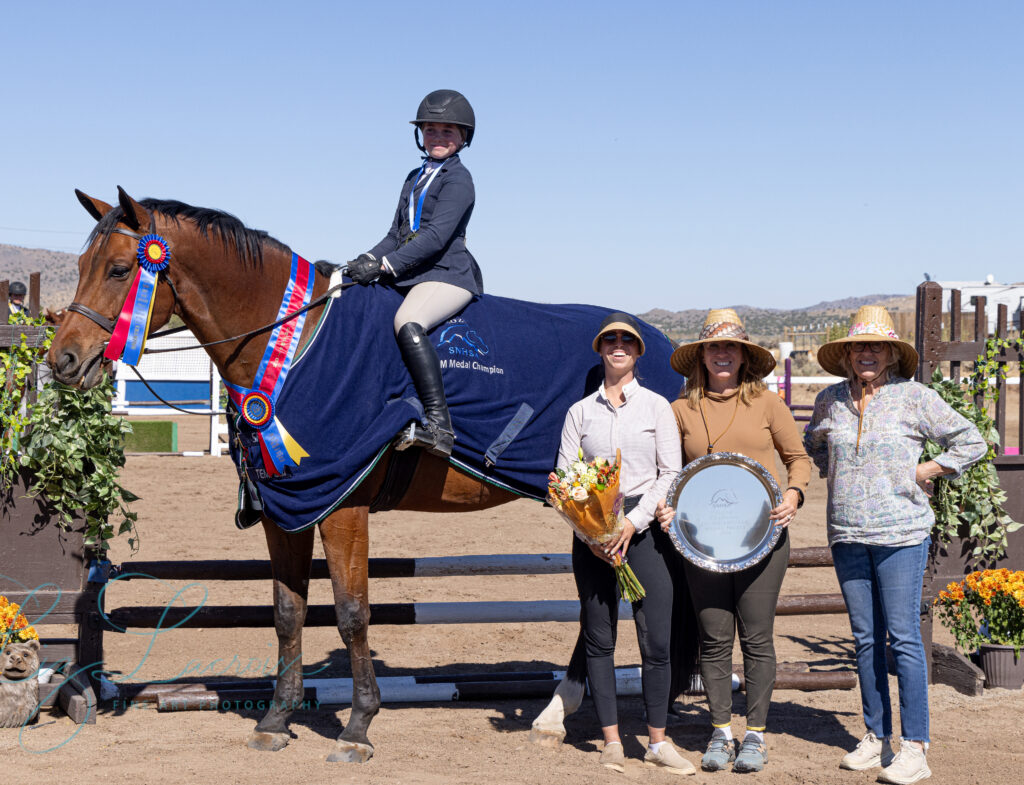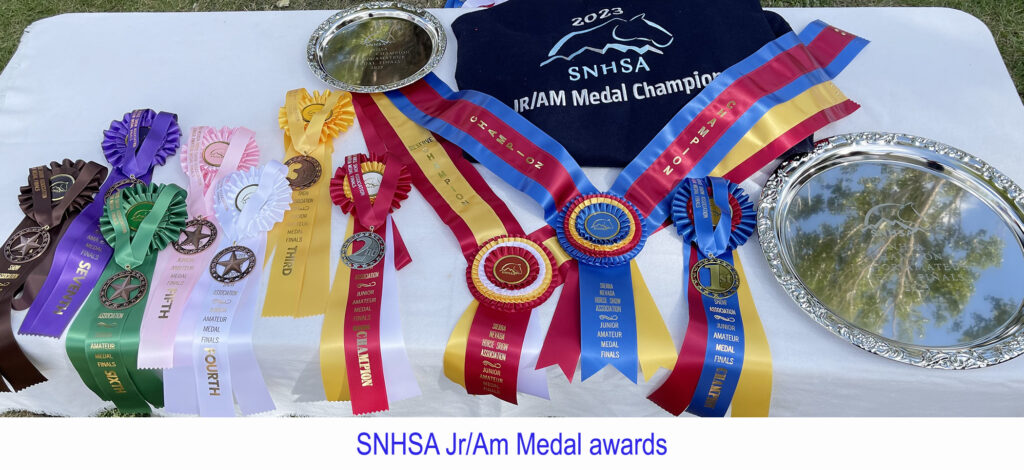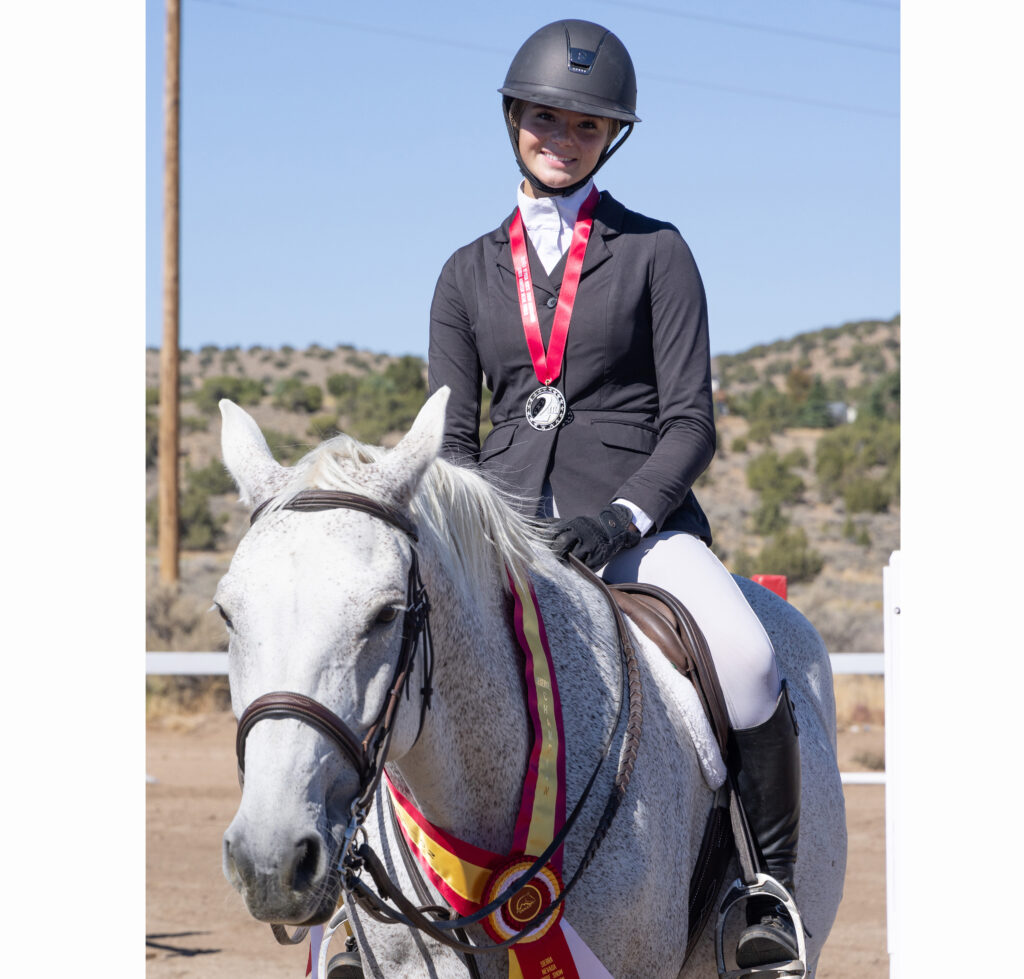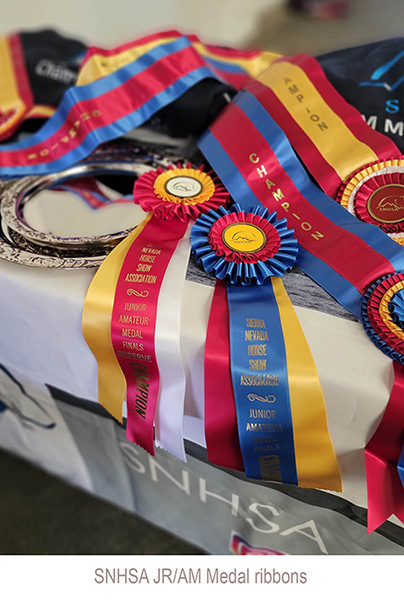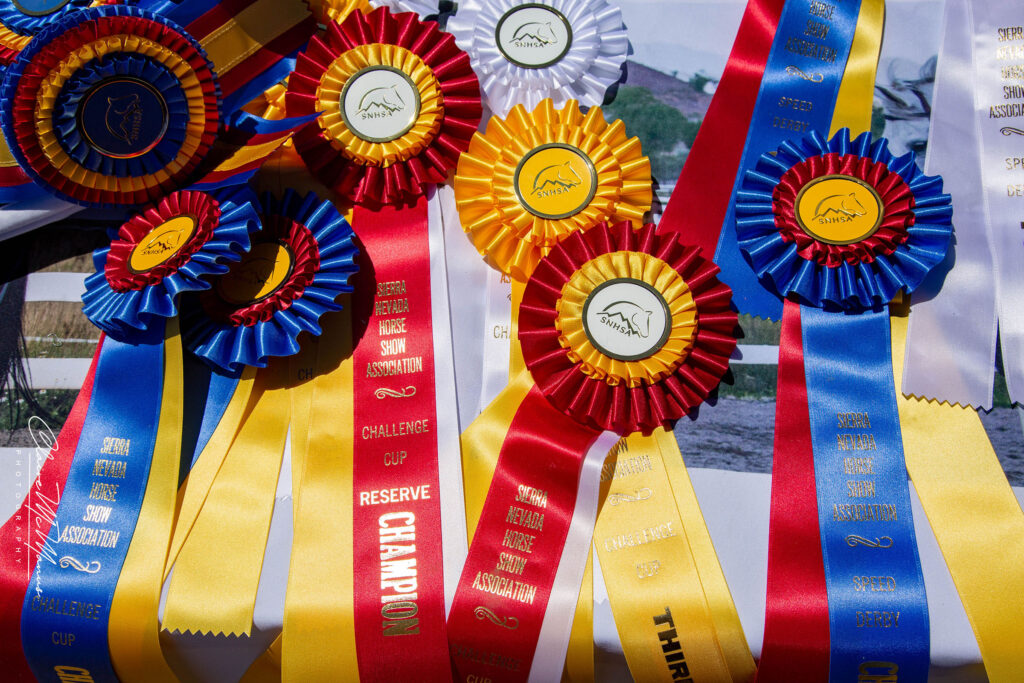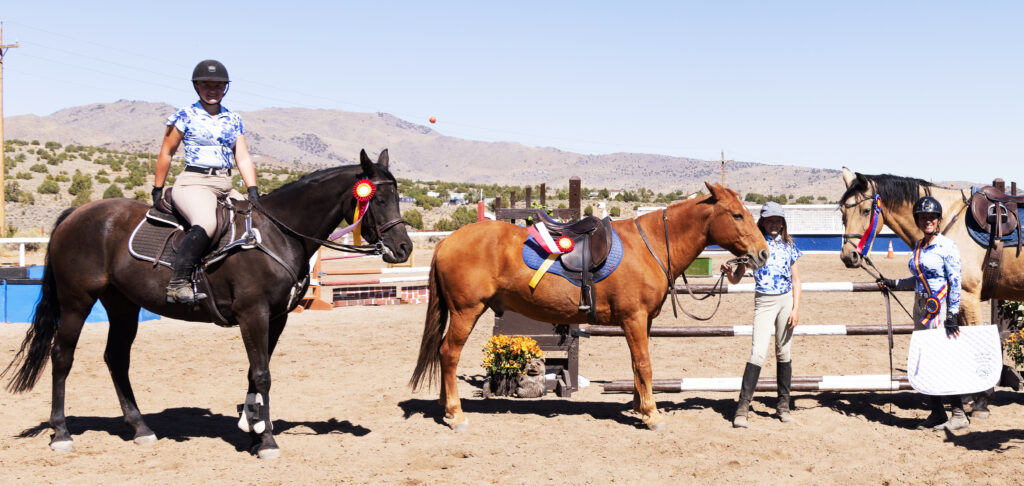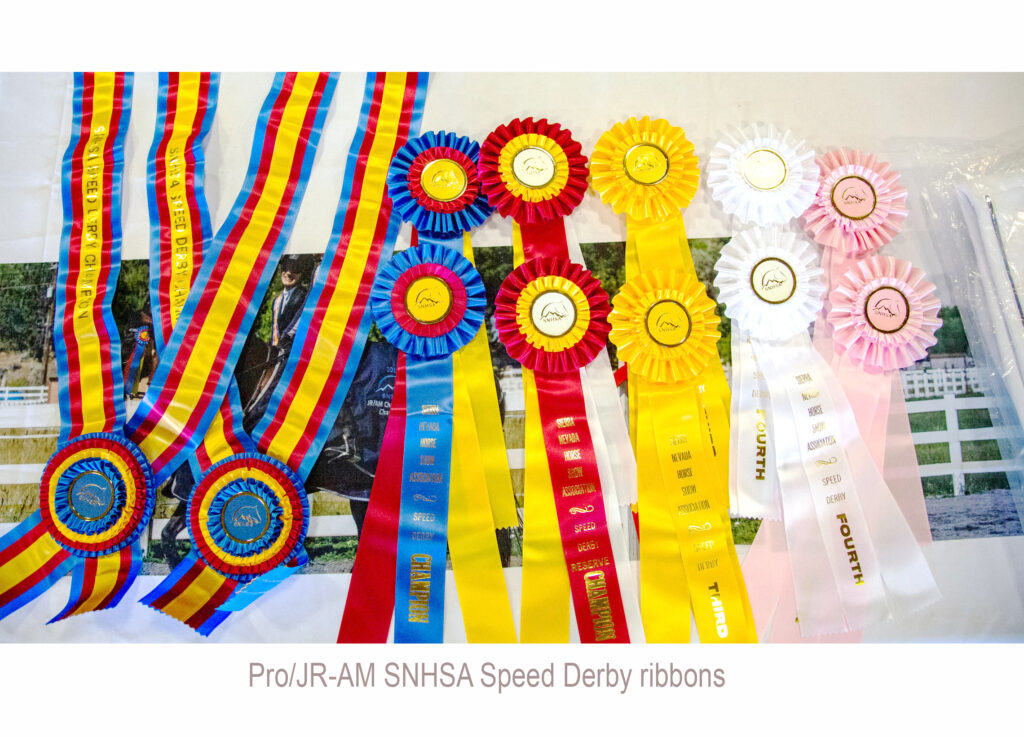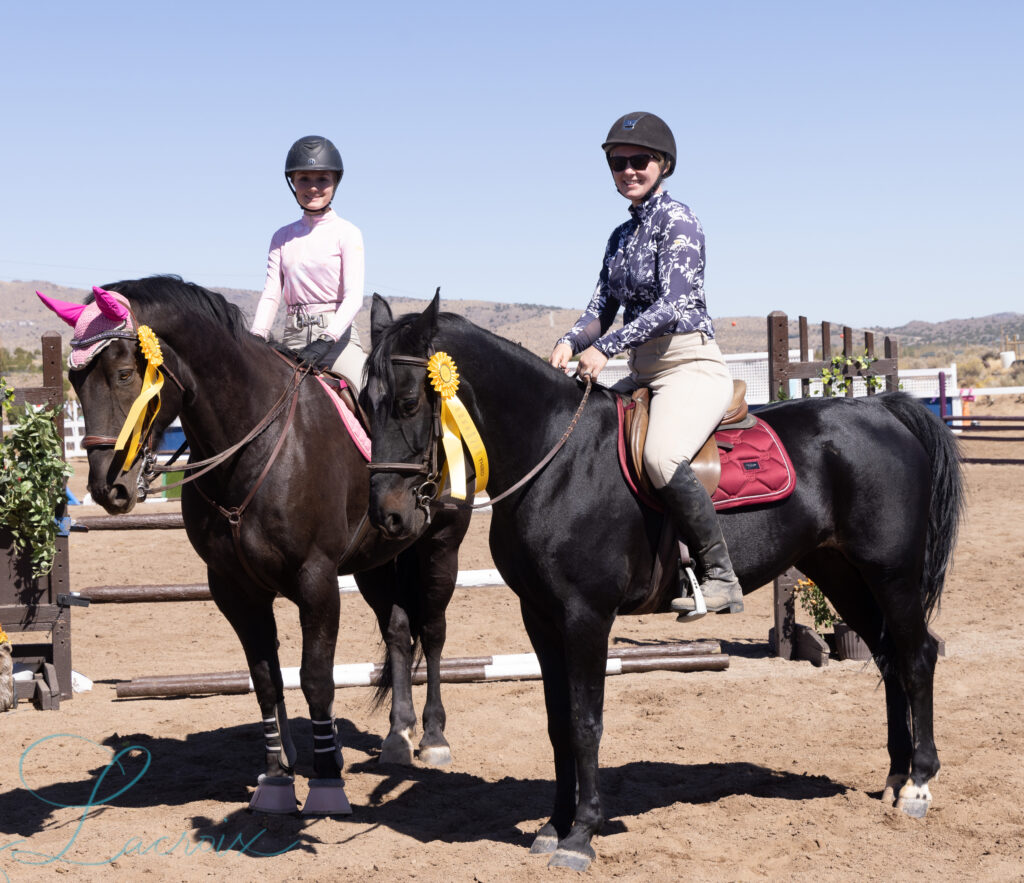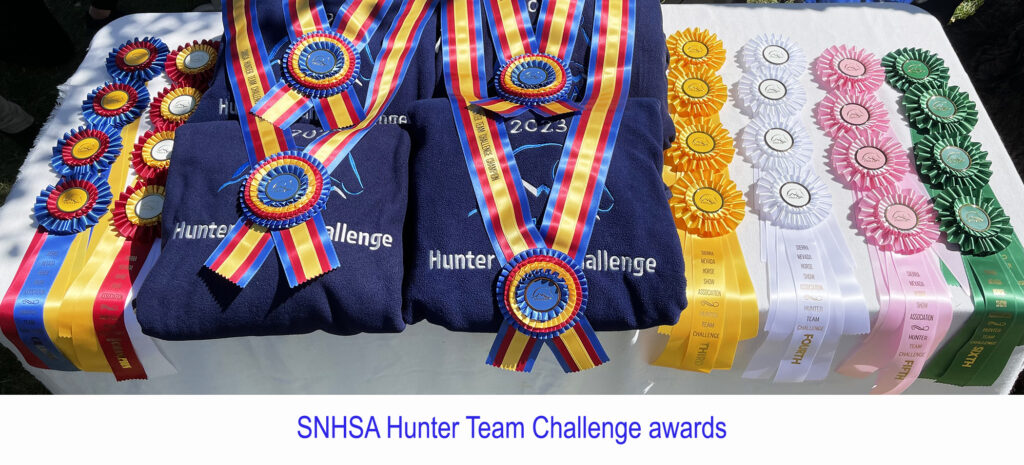
Competition Standards
Competition Standards and Structure Committee
Chair: Liz Reader, snhsa.president@gmail.com (775) 220-2270
Members: Lynne MacLean, Annelise Appleseth, Ali Telatnik
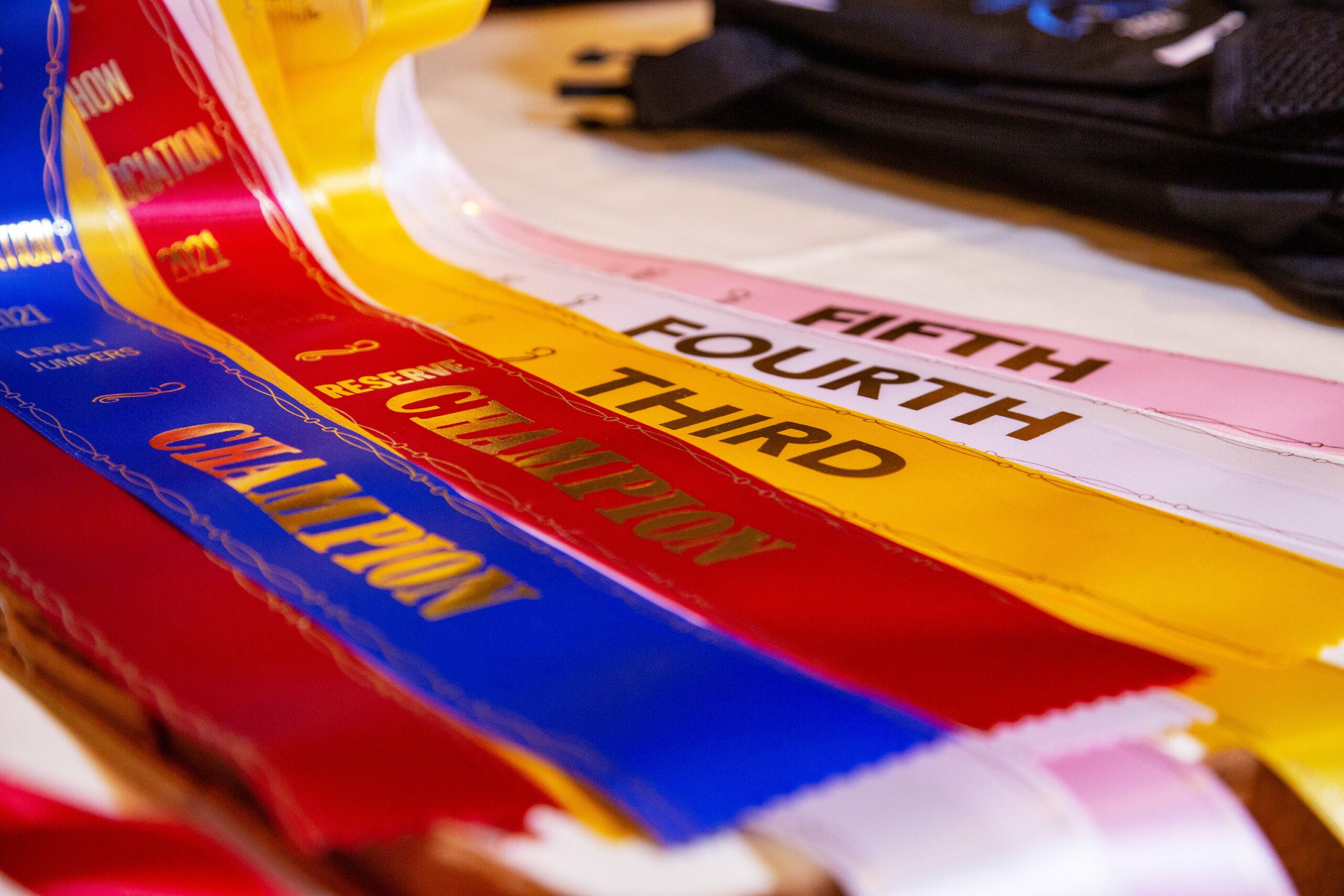
Medals and Programs
SNHSA Mini Medal
Open to Junior or Adult Amateur members of SNHSA. Riders may not cross enter into any class over 2'6" at the same competition. Rider and trainer must be SNHSA members. Registration of horse/ponies not required.
To be judged on equitation of the rider. To be shown over a course of no less than six obstacles 2'3" in height. Two tests (1-9) of the USEF rule book are required during the first round. Only one rider per horse or pony. There must be at least two eligible entries to hold the Medal classes at any SNHSA sanctioned show.
The top eight (8) riders, according to points, will qualify for the Finals.
Riders in this class may not compete in the SNHSA JR/AM Medal class in the same year.
The winner of SNHSA Mini Medal Finals is no longer eligible to compete in the SNHSA Mini Medal Class. Mini Medal Finals winners may, however, compete in the JR/AM Medal Class.
SNHSA Junior/Amateur Medal
Open to Junior or Adult Amateur members of SNHSA. Riders may not cross enter into any class below 2'6" at the same competition. Rider and trainer must be SNHSA members.
To be judged on equitation of the rider. To be shown over a course of no less than six obstacles 2'9" in height. Two or more tests (1 - 9) from the USEF rule book are required of the top four (4) competitors. Any exhibitor who does not participate in the testing is placed last of those exhibitors called back to test. Only one rider per horse or pony. There must be at least two (2) entries to hold the class.
The top eight (8) riders, according to points, will qualify for the Finals.
Riders in this class may not compete in the SNHSA Mini Medal class in the same year.
The winner of SNHSA JR/AM Medal Finals is no longer eligible to compete in the SNHSA Mini or JR/AM Medal Classes.
JR/AM Challenge Cup Tournament
- The SNHSA Jr/Am Challenge Cup Tournament will take place annually at a facility and date voted on by the Board of Directors.
- Riders competing in the tournament must be junior or amateur members of SNHSA in good standing.
- The SNHSA Jr/Am Challenge Cup Tournament will be conducted under a prix de nations format. Jumper teams of three (3) will ride two rounds each and be judged for time and penalties. Teams of two (2) will be permitted, but there will be no dropped score.
- The jumper teams compete at three levels: 2’3”-2’5”, 2’9”-3’1", and 3'1"- 3’3”. Teams must have riders compete at a minimum of 2 levels. For teams consisting of three riders, two riders may compete at the same height. For teams consisting of two riders, riders may choose any two of the three offered heights at which to compete. Substitution of horse or rider on a team may only be done with the permission of the show committee. Coordinating Hunt coats, saddle pads, horse leg wear, etc. is encouraged for each team. Teams must also declare a chef d’equipe.
- Those horse/rider combinations competing at .70 to .75m (2’3”- 2’5”) may not have competed at SNHSA shows over .95m (3’1”) during the current show year. Each horse may only compete on one team.
- Each rider will be scored for their round based on fewest faults in the fastest time over the course. At the end of Round 1, each team of three will drop their highest (most time and faults) scores. The remaining two scores will be added together for total time and total faults. The top eight (8) teams will move into Round 2. The highest of the three scores (not necessarily the same rider) will again be dropped and the remaining two added together. Then the Round 1 and Round 2 overall team scores are combined for a grand total.
- Tournament will be conducted over two rounds using a jumper course of not less than 10 fences. All riders at a particular level will jump their rounds, fences will be raised to the next height, and all riders at that height will jump their rounds, etc. When all riders have jumped once, first round scores will be tabulated and the second round may begin.
- At the conclusion of the second round, scores will be tabulated and the winning team declared. Team with the least amount of faults in the fastest combined time is the winner.
- A Jump-Off will be held after Round 2, should any teams tie with a final combined score of 0 faults, regardless of time. One rider shall Jump-Off for each team, elected by their team members and chef d’equipe. For those tied with one or more faults, the tie-breaker shall be determined by the team with the fastest combined times from both Round 1 and 2.
- Team prizes to 1st and ribbons through 8th will be awarded.
Pro/ Jr-Am Speed Derby
- The SNHSA Pro/Jr-Am Speed Derby is a team speed round competition.
- Teams consist of two riders, a Professional and either a Junior or Adult Amateur rider. Both riders must be SNHSA members in good standing. Coordinating team attire is encouraged for each team.
- This class will be run as a speed class under Table III with faults converted to seconds, with the first rider starting the clock as they cross the start line, and the second rider stopping the clock as they cross the finish line. For each rail down, 4 seconds will be added to the team’s overall time. There is no penalty for refusals other than the time taken, but the team will be eliminated if any single horse has two refusals.
- The course will consist of no fewer than 16 total fences, with each rider’s section consisting of no fewer than eight (8) fences. The Junior or Adult Amateur rider will ride first, with fences set at a height of .70-.75m (2’3”-2'5"). The professional rider will ride second, with fences set at .85-.95m (2’9”-3’1").
- The second rider will wait in a clearly marked area (box) while the first rider completes their section of the course. Once the first rider has completed their course, they enter a separate clearly marked area (box). Once the first rider is fully in their box, the second rider may leave their box and complete their section of the course. If the second rider leaves their box prior to the first rider fully entering theirs, a 4-second time penalty will be added to their team’s overall time.
- Riders may compete on up to two (2) teams; horses may only be on one (1) team.
- Team prizes to 1st and ribbons through 8th will be awarded.
SNHSA Hunter Team Challenge
-
- The SNHSA Hunter Team Challenge is modeled after the USHJA Hunter Team Challenge. Riders in the Team Challenge must be a SNHSA member in good standing, and horses must be registered for points to accrue.
- Teams compete at four different fence heights: 18” (crossrails), 2’3”, 2’6” and 2’9”. Teams of four must have a horse/rider combination competing at each fence height; teams of three must have horse/riders compete at 3 different fence heights. Each team must declare a Team Coach.
- Riders may enter up to two (2) horses but must ride consecutive fence heights. Each horse may only compete on one team, and not more than one professional is allowed per team. The professional may not compete at the 18” crossrail fence height.
- The Challenge consists of a single Hunt and Go Round and a single Under Saddle class. Riders will receive a numerical score 0-100 from both phases of the over-fences round (Classic and Handy) and for the under saddle class. All riders at a particular fence height will complete their round, fences will be adjusted to the next height, and all riders at that height will jump their round, etc. until all over-fences rounds have been completed.
- The Under Saddle class will be separated by Walk/Trot riders, and Walk/Trot/Canter riders, with no more than 7 riders in the ring at a time. Riders will be assigned their under saddle class order of go after teams are registered.
- Their Overall score will consist of 40% Classic score, 40% Handy score, and 20% from the under saddle round score.
- Team scores are calculated by adding each team member’s Overall scores. Four-member teams will drop their lowest Overall score. Three-member teams will drop their lowest Overall score and double their second lowest Overall score to ensure all teams have the benefit of a dropped score.
- At the conclusion of under saddle round, scores will be tabulated and the winning team placings declared.
- Team prizes will be awarded to 1st and team ribbons through 8th place.
Special Declaration Forms
In order for points to be allocated from special classes offered at SNHSA-sanctioned horse shows, riders must complete a SNHSA Special Class Declaration Form. Unless the Special Class Declaration Form is completed and submitted to the show secretary at the time of entry or prior to the start of the class, riders will not receive points for the special class.
Hunter derbies, special jumper classes and Equitation classic classes that are not SNHSA-sanctioned and require Special Declarations will count 1.5 points toward the matching SNHSA division. All of these classes would require a special declaration form for points to be awarded. This does not apply to the SNHSA Medal Finals.
- Special Jumper Classes:
- Points may be earned for jumper classes with corresponding jump heights.
- Exceptions
- .65m - Kindergarten or Low Pony Jumper
- .75m-.80m - Pre-Training or High Pony Jumper
- .90m - Level 1 Jumper or Low Child/Adult Amateur Jumper
- 1.0m - Level II or Level III Jumper
- Special Hunters Classes:
- If the special hunter class is at 18” the following division is eligible for points allocation:
- Jr/Am Crossrail Hunter
- If the special hunter class is at 2’- 2’3” the following divisions are eligible for points allocation:
- Pony Hunter, Long/Short Stirrup, Mini Hunter, Mini Ch/A Hunter
- If the special hunter class is at 2’6” the following divisions are eligible for points allocation:
- Special Hunter, Modified Child/Adult Hunter
- If the special hunter class is 2’9” or above the following divisions are eligible for points allocation:
- Low Hunter, Children’s/Adult Amateur Hunter, Modified Open Hunter
- If the special hunter class is at 18” the following division is eligible for points allocation:
- Special Equitation Classes:
- For a special equitation class, all age-appropriate equitation divisions are eligible to Juniors and Amateurs
